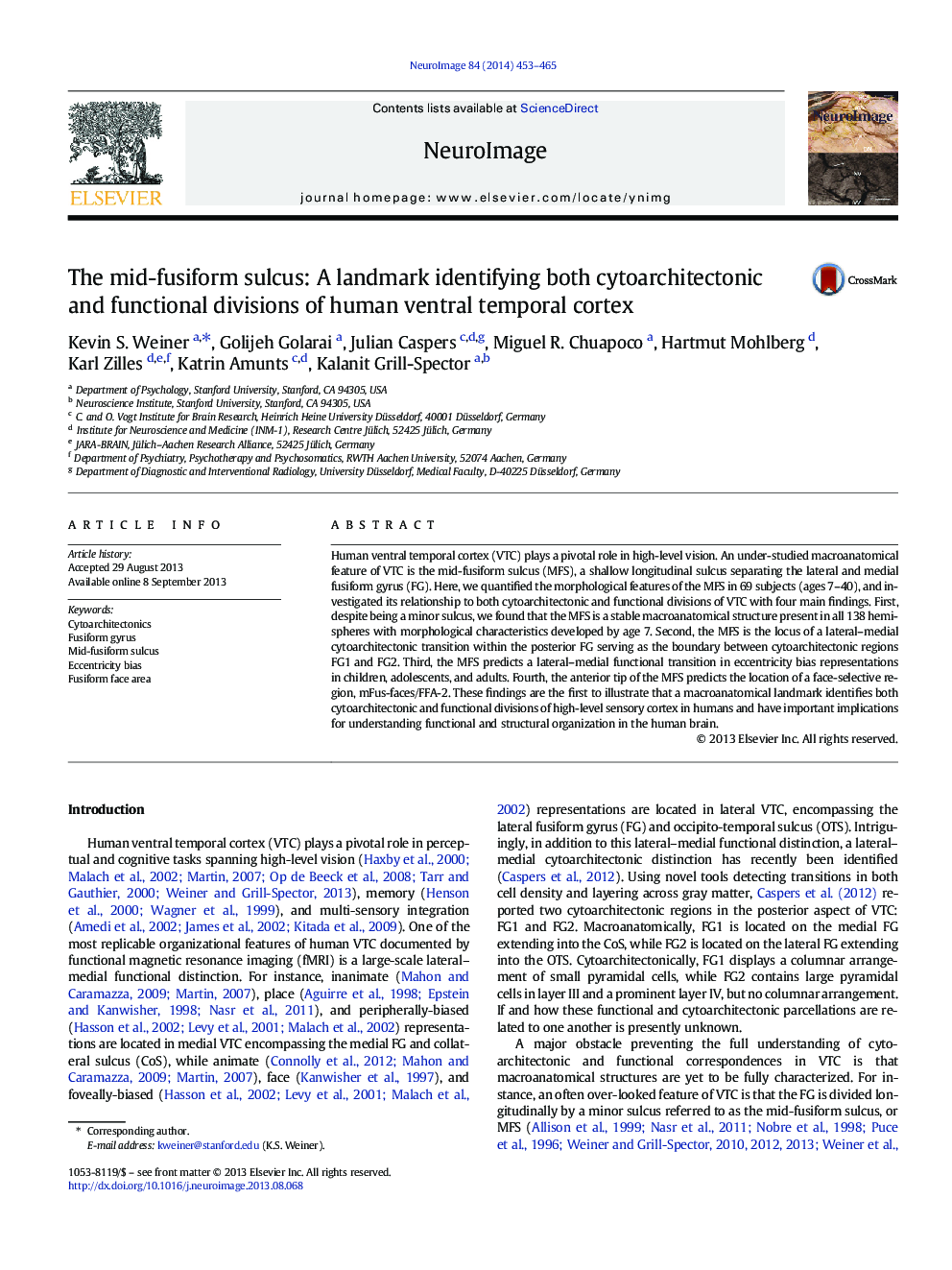| Article ID | Journal | Published Year | Pages | File Type |
|---|---|---|---|---|
| 6028490 | NeuroImage | 2014 | 13 Pages |
Abstract
Human ventral temporal cortex (VTC) plays a pivotal role in high-level vision. An under-studied macroanatomical feature of VTC is the mid-fusiform sulcus (MFS), a shallow longitudinal sulcus separating the lateral and medial fusiform gyrus (FG). Here, we quantified the morphological features of the MFS in 69 subjects (ages 7-40), and investigated its relationship to both cytoarchitectonic and functional divisions of VTC with four main findings. First, despite being a minor sulcus, we found that the MFS is a stable macroanatomical structure present in all 138 hemispheres with morphological characteristics developed by age 7. Second, the MFS is the locus of a lateral-medial cytoarchitectonic transition within the posterior FG serving as the boundary between cytoarchitectonic regions FG1 and FG2. Third, the MFS predicts a lateral-medial functional transition in eccentricity bias representations in children, adolescents, and adults. Fourth, the anterior tip of the MFS predicts the location of a face-selective region, mFus-faces/FFA-2. These findings are the first to illustrate that a macroanatomical landmark identifies both cytoarchitectonic and functional divisions of high-level sensory cortex in humans and have important implications for understanding functional and structural organization in the human brain.
Related Topics
Life Sciences
Neuroscience
Cognitive Neuroscience
Authors
Kevin S. Weiner, Golijeh Golarai, Julian Caspers, Miguel R. Chuapoco, Hartmut Mohlberg, Karl Zilles, Katrin Amunts, Kalanit Grill-Spector,
